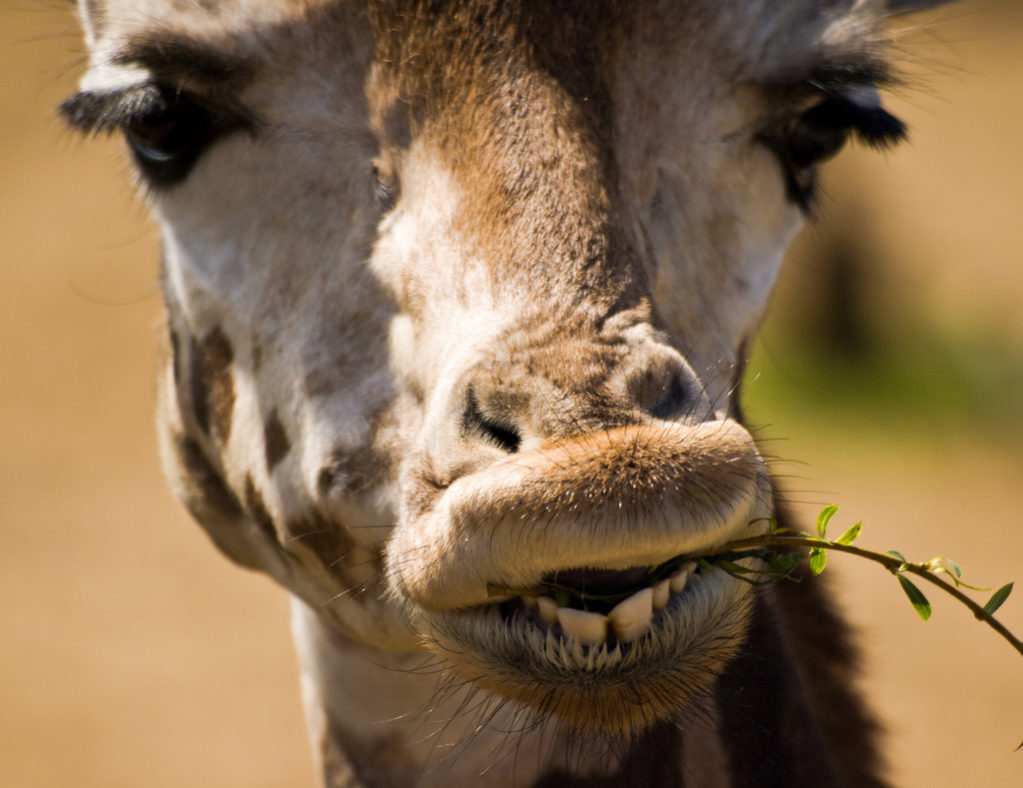Pensive Giraffe

The giraffe (Giraffa camelopardalis) is an African even-toed ungulate mammal, the tallest living terrestrial animal and the largest ruminant. Its specific name refers to its camel-like face and the patches of color on its fur, which bear a vague resemblance to a leopard’s spots. The giraffe is noted for its extremely long neck and legs, as well as its horn-like ossicones. It stands 5–6 m (16–20 ft) tall and has an average weight of 1,600 kg (3,500 lb) for males and 830 kg (1,800 lb) for females. It is classified under the family Giraffidae, along with its closest extant relative, the okapi. There are nine subspecies, which are distinguished by their coat patterns.
The giraffe’s scattered range extends from Chad in the north to South Africa in the south, and from Niger in the west to Somalia in the east. Giraffes usually inhabit savannas, grasslands, and open woodlands. Their primary food source is acacia leaves, which they can browse at heights that most other herbivores cannot reach. Giraffes are preyed on by lions, and calves are also targeted by leopards, spotted hyenas and wild dogs. Adult giraffes do not have strong social bonds, though they do gather in loose aggregations if they happen to be moving in the same general direction. Males establish social hierarchies through “necking”, which are combat bouts where the neck is used as a weapon. Dominant males gain mating access to females, who bear the sole responsibility for raising the young.
The giraffe has intrigued various cultures, both ancient and modern, for its peculiar appearance, and has often been featured in paintings, books and cartoons. It is classified by the International Union for Conservation of Nature (IUCN) as Least Concern, but has been extirpated from many parts of its former range, and some subspecies are classified as Endangered. Nevertheless, giraffes are still found in numerous national parks and game reserves.
